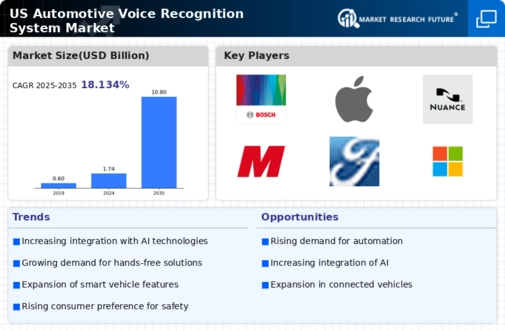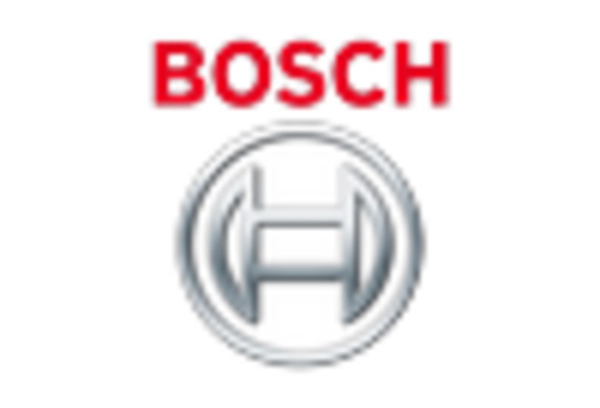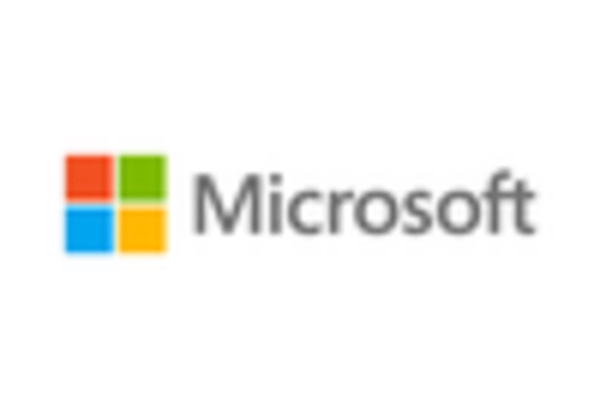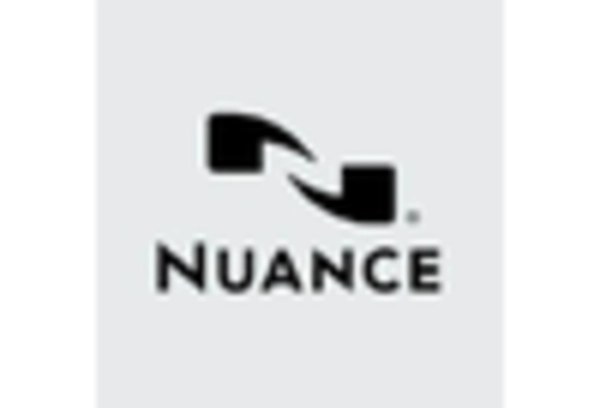Rising Demand for In-Car Connectivity
The automotive voice-recognition-system market experiences a notable surge in demand due to the increasing consumer preference for in-car connectivity features. As vehicles become more integrated with smartphones and other devices, the need for seamless voice interaction grows. According to recent data, approximately 70% of consumers express a desire for advanced voice recognition systems that facilitate hands-free operation. This trend is driven by the need for enhanced safety and convenience while driving. The automotive voice-recognition-system market is thus positioned to benefit from this shift, as manufacturers strive to incorporate sophisticated voice technologies that align with consumer expectations. Furthermore, the integration of voice systems with navigation and entertainment features is likely to enhance user experience, making it a pivotal driver in the automotive voice-recognition-system market.
Regulatory Push for Enhanced Safety Features
The automotive voice-recognition-system market is also propelled by regulatory initiatives aimed at enhancing vehicle safety. Governments are increasingly mandating the inclusion of advanced safety features in vehicles, which often encompass voice recognition systems. These systems allow drivers to control various functions without taking their hands off the wheel or eyes off the road. As a result, the market is witnessing a shift towards systems that comply with safety regulations while providing intuitive user experiences. The automotive voice-recognition-system market is expected to expand as manufacturers adapt to these regulations, ensuring that their products not only meet safety standards but also enhance overall vehicle functionality. This regulatory push is likely to create a favorable environment for the adoption of voice technologies in vehicles.
Consumer Preference for Personalized Experiences
Consumer preference for personalized experiences is emerging as a significant driver in the automotive voice-recognition-system market. As users seek tailored interactions with their vehicles, voice recognition systems that adapt to individual preferences are gaining traction. Data indicates that nearly 60% of consumers are more likely to choose vehicles equipped with personalized voice features. This trend is prompting manufacturers to invest in systems that learn user habits and preferences over time, thereby enhancing the driving experience. The automotive voice-recognition-system market is thus evolving to meet these demands, with a focus on creating systems that offer customized responses and functionalities. This shift towards personalization not only improves user satisfaction but also fosters brand loyalty among consumers.
Technological Advancements in AI and Machine Learning
Technological advancements in artificial intelligence (AI) and machine learning are significantly influencing the automotive voice-recognition-system market. These innovations enable systems to understand and process natural language more effectively, leading to improved user interactions. The market is projected to grow at a CAGR of 15% over the next five years, driven by these advancements. Enhanced algorithms allow for better context understanding and voice command accuracy, which are crucial for user satisfaction. As manufacturers invest in AI-driven solutions, the automotive voice-recognition-system market is likely to see a proliferation of features that cater to diverse user needs, thereby enhancing the overall driving experience. This technological evolution not only improves functionality but also positions voice recognition as a key differentiator in the competitive automotive landscape.
Integration of Voice Recognition with Advanced Driver Assistance Systems (ADAS)
The integration of voice recognition technology with advanced driver assistance systems (ADAS) is a crucial driver for the automotive voice-recognition-system market. As vehicles become increasingly equipped with ADAS features, the need for intuitive voice commands to control these systems is growing. This integration allows drivers to interact with safety features, navigation, and infotainment systems seamlessly. Market analysis suggests that the automotive voice-recognition-system market could see a growth rate of 12% annually as more vehicles adopt these integrated systems. By enabling hands-free control of ADAS functionalities, voice recognition enhances safety and convenience, making it an essential component of modern vehicles. This trend indicates a shift towards more sophisticated automotive technologies that prioritize user interaction and safety.

















Leave a Comment